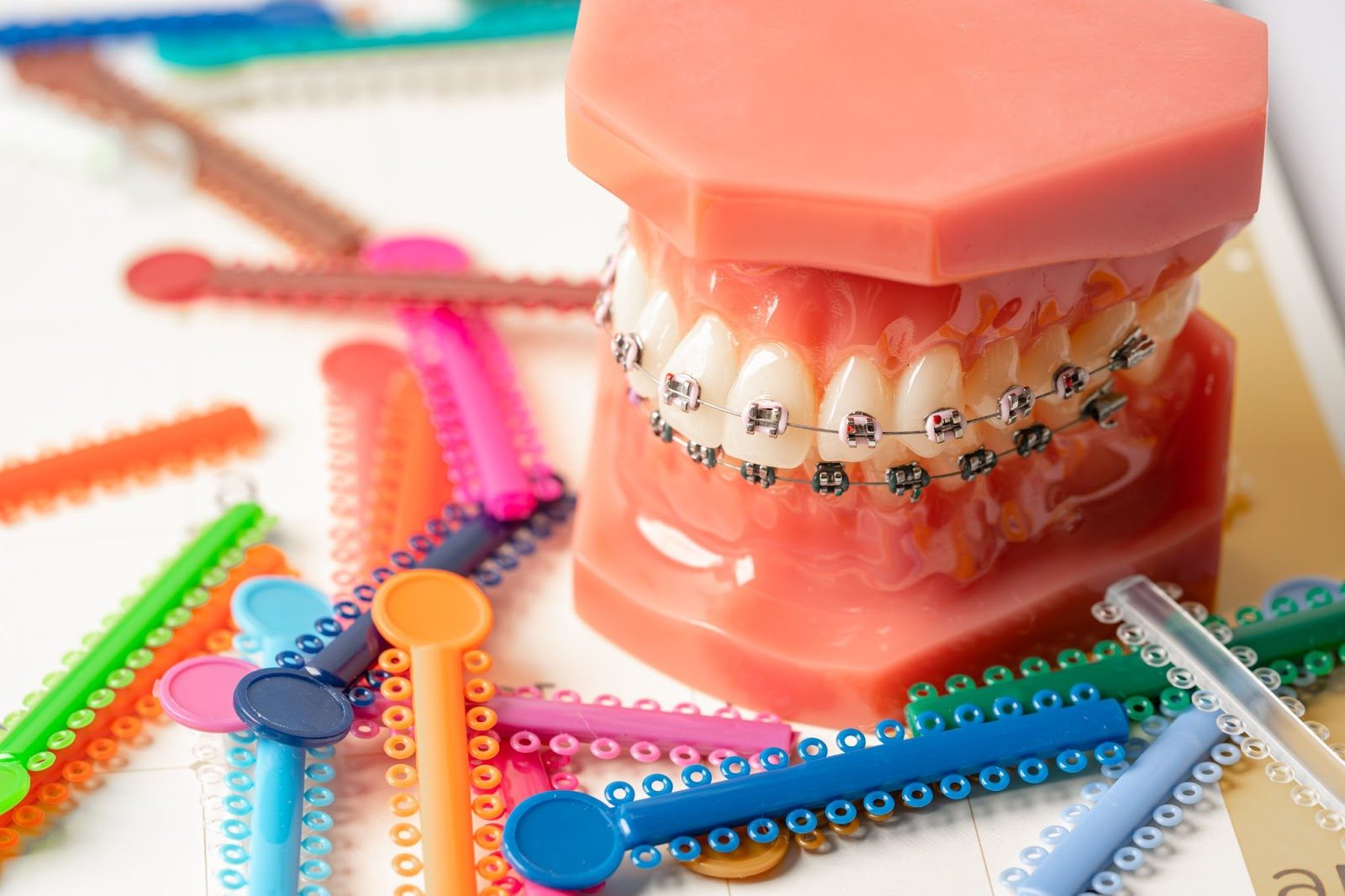How Do Braces Work? Everything You Need To Know
Sometimes it is for beauty. Sometimes it is to better your bite. For whatever reason, having a set of straight teeth bolsters confidence, and is regarded as an important aspect of our image and lifestyle.
To help achieve that alignment, orthodontic braces have been the go-to staple in dentistry for decades. It is a reliable and effective solution to not just correct misaligned teeth for aesthetic purposes, but help with other oral issues as well, such as chewing difficulties, increased risk of cavities, and uneven wear on teeth. Sometimes, it is even used to assist with jaw surgeries to help with over or underbites, or facial shape.
Whatever the reason for your decision, it is a good idea to ask: How do braces work? Given the multitude of options available on the market now, understanding the process will help you make that informed decision.
How do braces work?
While we know braces push the teeth back into alignment, there is a lot more happening behind the scenes. Two components are commonly seen in traditional metal braces. The most visible are the brackets – made of quality stainless steel and are anchored on each tooth’s surface. The archwire, threaded through these brackets, is secured further using ligature elastomeric bands and then exerts a controlled force on the teeth. Deeper within, bands secure the braces to the back molars, and additional elements like hooks or springs may be incorporated for specific adjustments as determined by the dentist.
Here is where it gets tricky. The process of applying force is a carefully orchestrated one by the orthodontist. Based on the existing state, the dentist will have to determine the optimal force needed for each tooth’s movement – taking into account the entire set as well. This force begins to initiate a biological response in the bone surrounding the tooth, stimulating deep bone remodelling.
Understanding this bone remodelling is pivotal to grasping the effectiveness of braces. As pressure is applied to a tooth, the bone on one side undergoes compression, while the bone on the other side undergoes resorption. This just means that one part becomes denser, while the other releases bone minerals back into the body. This dynamic process is how the tooth can shift gradually into its intended position while reshaping the jaw at the same time. After the teeth are in place for some time, the same process stabilises and secures the teeth in their new locations. This is why braces need a significant amount of time.
Why are there a few appointments? Why can’t I just have one session?
As your teeth move to the force of the braces, the archwire will begin to lose its tightness. Visiting the orthodontist will help to maintain the necessary force to keep the braces at their optimal effect and achieve their goals.
At each visit, the orthodontist may need to tighten the archwire, replace bands, or introduce new elements to maintain progress and address emerging dental challenges, if any. They will need to determine this from the perspective of the individual as well, to ensure their comfort level with their adjustments. It is a good time to clarify any issues or challenges as well, such as those related to brushing or upkeep.
Expect one appointment every four to eight weeks, and an average time frame of one to three years depending on the method and condition.
Why are there so many types of braces out there?
Braces have evolved a lot over the decades and the new offerings cater to differing needs. Here are some of the more popular options apart from the standard metal braces.
Ceramic braces: If you prefer a more discreet look, consider ceramic braces. They are a discreet alternative by replacing the metal brackets with natural tooth-coloured versions, making them less jarring with just the archwire visible. They are also great for those with metal allergies or who require regular imaging tests in the head and neck region.
Lingual braces: While still metal braces, these are installed on the backside of the teeth, adding to invisibility. Their hidden nature is appealing, but they do come with some challenges in cleaning and abrasions on the tongue.
Self-ligating braces: A relatively new design, self-ligating braces replace the traditional ligature elastomeric bands with special brackets with built-in clips or doors that hold the archwire in place. The low-friction, low-force bracket system offers a more streamlined look with more comfort and easier maintenance. Clear varieties offer an even more aesthetic look.
Invisalign: Invisalign is another novel approach to orthodontics. These clear aligners are custom-made to fit snugly over the teeth, gradually guiding them into the desired positions. Invisalign’s removable nature offers flexibility and convenience, making it a preferred choice for many adults seeking discreet orthodontic treatment, while still enjoying the food or activities they enjoy.
Is there anything I need to take note of when I am wearing braces?
Depending on your choice of braces, there are different areas to take note of. However, in all cases, maintaining optimal oral hygiene is paramount. Whether it is the traditional metal braces or Invisalign, the presence of brackets, wires and plastic cover creates additional nooks and crannies where food particles can accumulate. Diligent brushing, flossing, and regular dental check-ups are crucial to prevent issues like cavities and gum disease, and your orthodontist will advise based on your chosen type of braces.
For certain braces, there are also foods to avoid. Sticky or hard foods could damage braces or impede tooth movement and should be limited. Fibrous menus can also be tricky to have and some may prefer to avoid them at select functions.
Most important – and natural – is some level of discomfort, particularly during the initial days of braces or after adjustments. This can also come with acclimating to changes in speech and eating styles. Most, however, adapt within days, and any further discomfort can be alleviated by over-the-counter pain relievers and orthodontic wax.
Whichever type is chosen, each type of braces has the same transformative end goal – a radiant, well-aligned smile. Now that you’ve understood how braces work, consult with an experienced dentist who can guide you towards the best approach tailored to your unique needs and aspirations.
Bring forth your most brilliant smile. Speak to the friendly and experienced professionals at The Braces Practise and design your new confidence.








